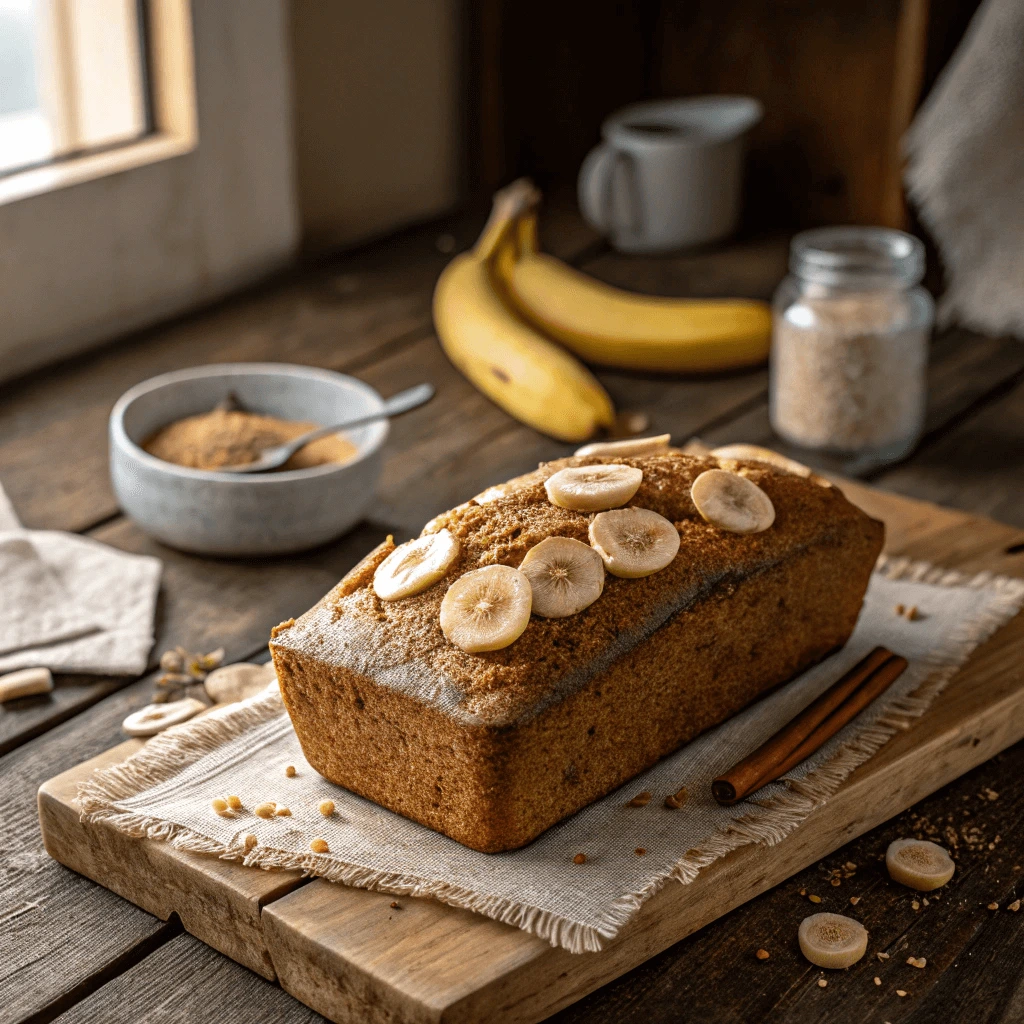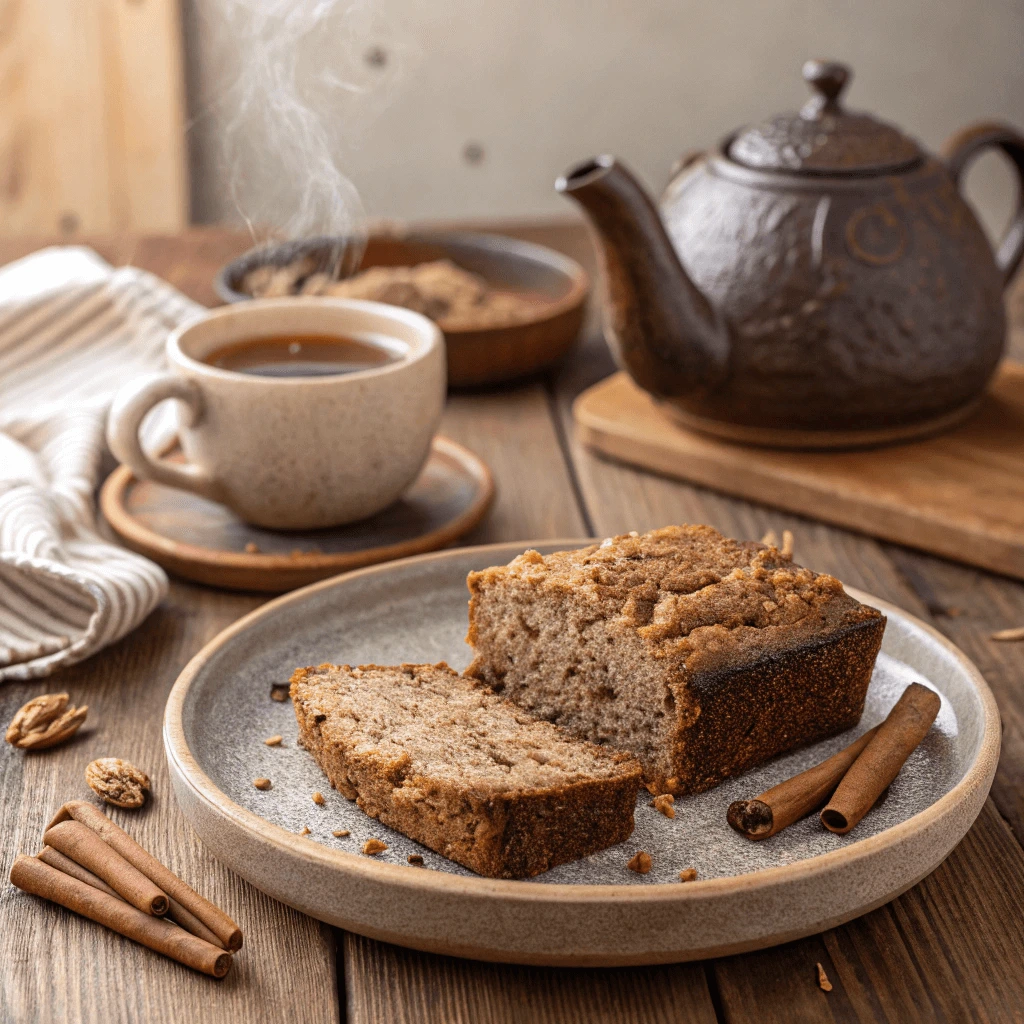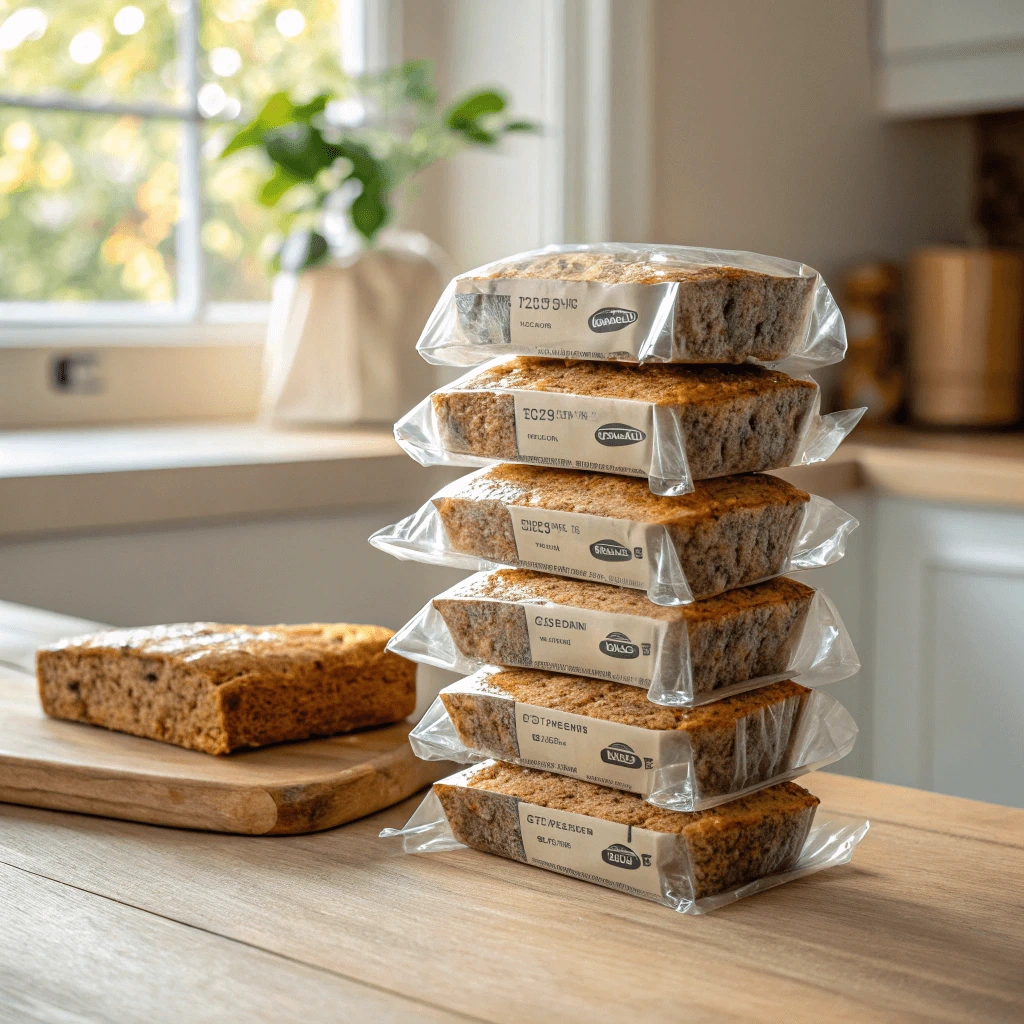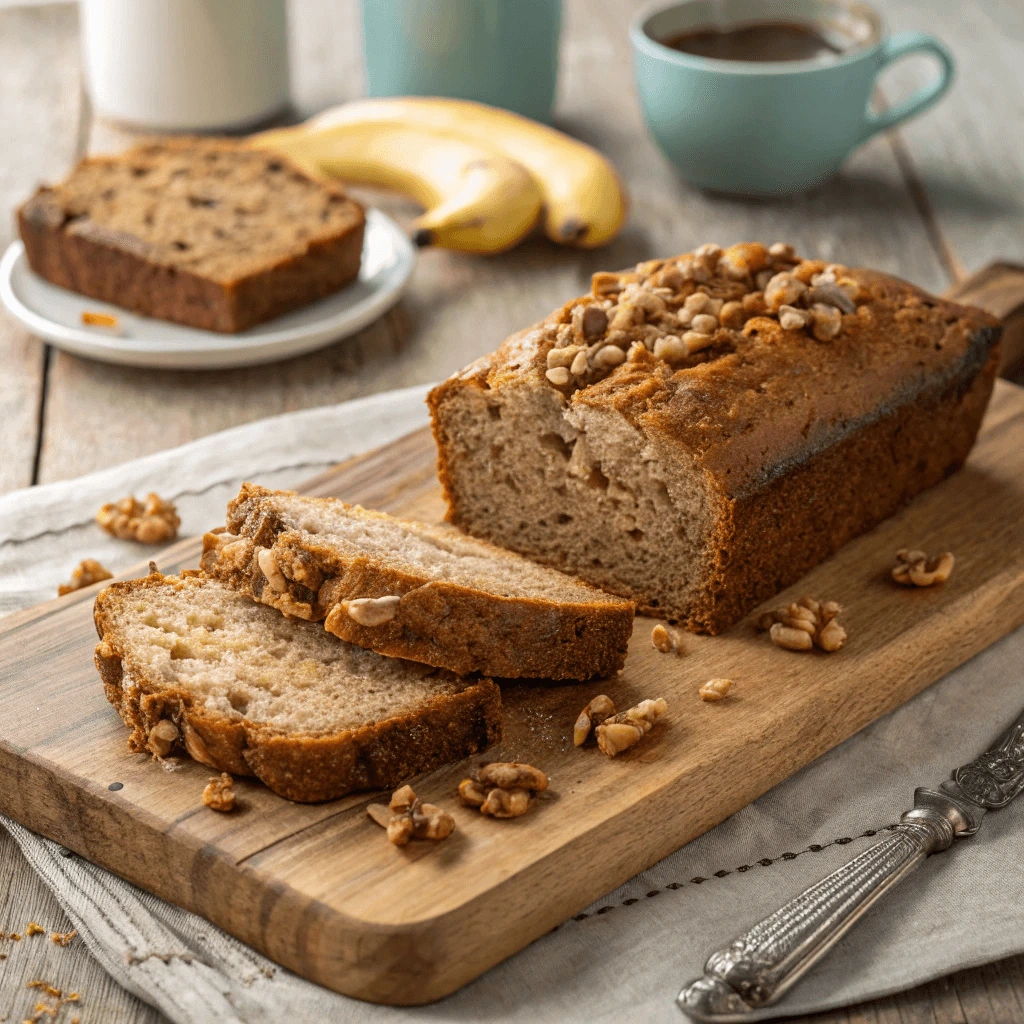Looking for a better way to enjoy banana bread? Whether you’re cutting back on sugar, avoiding gluten, or simply aiming to eat cleaner, these healthy and delicious banana bread ideas offer the perfect balance of nutrition and flavor. From whole wheat loaves to vegan-friendly variations, there’s something here for every taste and lifestyle. Using simple, wholesome ingredients, you can whip up a moist, satisfying treat without sacrificing flavor. Read on to discover creative banana bread recipes you can feel good about baking—and even better about eating!
Why Choose Healthy Banana Bread Over Traditional Recipes

Reduce Sugar Without Sacrificing Flavor
Reducing sugar in banana bread doesn’t mean giving up taste. With the right ingredients and techniques, you can enjoy a naturally sweet loaf that’s still satisfying and delicious.
Use Naturally Sweet Ingredients
Bananas are naturally sweet—especially when overripe—so let them do most of the work. Use very ripe bananas with dark spots on the peel to bring out their full sweetness. You can also mix in unsweetened applesauce or crushed pineapple, which adds moisture and a mild sweetness without refined sugar.
Swap Refined Sugar for Healthier Options
Instead of white sugar, try alternatives like coconut sugar, maple syrup, or date syrup. These sweeteners contain trace nutrients and have a lower glycemic index. They also create a deeper, more complex flavor. Honey is another great choice, though you should reduce the liquid in your recipe slightly to maintain the right texture.
Enhance Flavor with Spices and Extracts
Spices like cinnamon, nutmeg, and a dash of ground ginger can enhance the natural sweetness of your banana bread. A splash of vanilla or almond extract also makes the loaf taste sweeter without adding more sugar. These small adjustments help create the perception of sweetness while using less.
Benefits of Using Whole Wheat or Almond Flour
Looking to make your banana bread healthier without losing its flavor? Swapping traditional all-purpose flour for whole wheat or almond flour is a smart choice. Both options boost the nutrition of your loaf while keeping it moist and delicious.
Why Choose Whole Wheat Flour?
Whole wheat flour adds more fiber, iron, and B vitamins than white flour. It helps you stay full longer and supports healthy digestion. Its slightly nutty flavor blends well with banana and warm spices. For best texture, use half whole wheat and half all-purpose flour to avoid a dense result.
Almond Flour for a Nutty Boost
Almond flour is perfect for those who want a gluten-free option. Made from ground almonds, it’s high in protein, vitamin E, and healthy fats. It gives banana bread a tender crumb and a rich, nutty flavor. Pair it with bananas, cinnamon, and a touch of honey for extra depth.
A Better-for-You Banana Bread
Using either flour—alone or in combination—can turn banana bread into a more wholesome treat. You’ll enjoy the same comforting taste with added nutrients and a satisfying texture.
Make It Moist Without Butter or Dairy
You don’t need butter or dairy to create moist, tender banana bread. With a few smart swaps, you can bake a loaf that’s just as rich and satisfying—while keeping it lighter and dairy-free.
Use Plant-Based Oils for Moisture
Vegetable oil, avocado oil, or melted coconut oil can easily replace butter. These oils keep your banana bread soft and moist without weighing it down. Coconut oil, in particular, adds a hint of tropical flavor that complements bananas beautifully.
Add Non-Dairy Yogurt or Applesauce
Non-dairy yogurt, like almond or coconut yogurt, gives the bread a creamy texture and a little tang. Unsweetened applesauce is another great alternative—it not only adds moisture but also a touch of natural sweetness. Both are perfect for reducing fat without compromising taste.
Don’t Forget the Bananas
Ripe bananas are naturally moist and sweet, making them the best base for dairy-free banana bread. The more overripe the bananas, the better the flavor and texture. Mash them well to ensure even distribution throughout the batter.
Essential Ingredients for Healthy Banana Bread
Ripe Bananas: The Natural Sweetener
Ripe bananas are more than just an essential ingredient—they naturally sweeten your banana bread while enhancing its flavor and texture.
Why Ripe Bananas Work Best
As bananas ripen, their starches break down into sugars. This process boosts their sweetness and makes them easier to mash into a smooth, creamy base for your batter. The darker the peel, the sweeter and more flavorful the banana becomes. Those spotty, soft bananas in your fruit bowl? They’re perfect for baking.
Reduce Added Sugar with Confidence
Using ripe bananas allows you to cut back on refined sugar without sacrificing taste. In many recipes, you can reduce added sugar by up to 25–50% just by letting your bananas fully ripen. The natural sweetness they provide adds depth, making each bite more satisfying.
Enhance Moisture and Texture
Beyond sweetness, ripe bananas also help lock in moisture. They contribute to a tender crumb and a dense, rich texture. Their natural sugars caramelize during baking, which gives the loaf a golden brown crust and irresistible aroma.
Smart Substitutes for Eggs and Fats
Swapping out eggs and fats doesn’t mean you have to give up on taste or texture. With the right plant-based ingredients, you can create moist, flavorful banana bread that’s both healthy and satisfying.
Egg Substitutes That Work
When you bake without eggs, you can turn to simple, nutritious alternatives that still provide structure and moisture. Mashed bananas, unsweetened applesauce, or ground flaxseed mixed with water all work well. For example, one tablespoon of ground flaxseed combined with three tablespoons of water equals one egg. These options not only bind the batter but also add fiber and nutrients.
Healthy Alternatives to Butter and Oil
Instead of butter or oil, try using mashed avocado, Greek yogurt (if not avoiding dairy), or unsweetened applesauce. These substitutes maintain the rich, moist texture banana bread is known for, while reducing saturated fat. You can also use nut butters like almond or cashew butter to add creaminess and healthy fats.
Keep Flavor and Texture Intact
With the right balance, these smart swaps don’t sacrifice flavor or consistency. In fact, they often enhance the nutritional value and make your banana bread suitable for more diets—like vegan, dairy-free, or low-fat lifestyles.
Experimenting with these substitutes helps you personalize your banana bread while keeping it wholesome and delicious.
Add-Ins That Boost Nutrition and Flavor
Transform your banana bread from a simple snack into a powerhouse of flavor and nutrition by including healthy mix-ins. These extras not only enhance taste but also add essential vitamins, minerals, and fiber.
Nuts and Seeds for Crunch and Protein
Add chopped walnuts, almonds, or pecans to your batter for a satisfying crunch. These nuts bring healthy fats, protein, and omega-3s to each bite. If you want a smaller texture or nut-free option, sprinkle in chia seeds, flaxseeds, or sunflower seeds. They contribute extra fiber and help you feel fuller longer.
Fruits and Veggies for Natural Sweetness
Stir in diced apples, shredded zucchini, or grated carrots to increase moisture and nutrition without overwhelming the banana flavor. Dried fruits like raisins, chopped dates, or cranberries work well too. They add natural sweetness, antioxidants, and chewiness that elevate each slice.
Superfoods and Spices for Extra Depth
Boost flavor and nutrients with ingredients like cocoa nibs, dark chocolate chunks, or a spoonful of peanut or almond butter. Don’t forget spices—cinnamon, nutmeg, or ginger add warmth and depth while also offering anti-inflammatory benefits.
Healthy Banana Bread Variations to Try Today

Vegan Banana Bread with Flax Eggs
Making moist, flavorful banana bread without eggs is entirely possible—and delicious! Flax eggs offer a simple, plant-based substitute that keeps your recipe vegan while still providing structure and moisture.
What Are Flax Eggs and How Do They Work?
A flax egg is a mixture of ground flaxseed and water. Combine one tablespoon of ground flaxseed with three tablespoons of water and let it sit for 5–10 minutes until it forms a gel-like consistency. This texture mimics the binding power of eggs, helping hold the banana bread together during baking.
Why Flax Eggs Work Well in Banana Bread
Flax eggs complement the moisture of ripe bananas. Together, they create a soft, tender crumb without the need for dairy or traditional eggs. Flaxseeds are also rich in fiber and omega-3 fatty acids, adding a subtle nutty flavor and extra nutrients to your loaf.
Tips for Baking Vegan Banana Bread
Use overripe bananas to boost natural sweetness and softness. Replace dairy milk with plant-based options like almond or oat milk. Choose coconut oil or avocado oil to enhance moisture without animal fats. Finally, add in nuts, vegan chocolate chips, or dried fruit to personalize your banana bread.
Gluten-Free Banana Bread with Oats and Almond Flour
You can enjoy banana bread even if you’re avoiding gluten. By using wholesome alternatives like oats and almond flour, you create a loaf that’s both satisfying and gluten-free—without sacrificing taste or texture.
Why Choose Oats and Almond Flour?
Rolled oats and almond flour offer excellent structure and flavor. Oats bring a slightly chewy bite and boost the fiber content, while almond flour adds richness and a mild nuttiness. Together, they produce a hearty banana bread that holds its shape and stays moist.
Blending Flours for Better Texture
While almond flour alone can make the bread too dense, blending it with oat flour creates a balanced texture. You can make oat flour at home by grinding rolled oats in a blender until fine. This combination ensures a tender crumb without the need for wheat-based flours.
Helpful Tips for Gluten-Free Success
Add a binding ingredient like ground flaxseed, chia seeds, or a mashed banana to help hold the loaf together. Choose certified gluten-free oats to avoid cross-contamination. Let the batter rest for a few minutes before baking—this gives the oats time to absorb moisture and improves the final texture.
Low-Sugar Banana Bread with Cinnamon and Vanilla
Reducing sugar doesn’t mean sacrificing flavor. With the natural sweetness of ripe bananas, plus warm notes from cinnamon and vanilla, you can create a delicious banana bread that’s healthier and still satisfying.
Using Ripe Bananas as a Natural Sweetener
The riper the banana, the sweeter it becomes. When bananas develop brown spots and a soft texture, their natural sugars intensify. Mash them well and use them as the primary sweetener in your banana bread. This not only reduces the need for added sugar but also adds moisture.
Why Cinnamon and Vanilla Work So Well
Cinnamon brings a gentle spice that enhances the bread’s natural flavors, while vanilla adds depth and warmth. Together, they round out the taste and allow you to cut back on sugar without noticing a loss in richness. A teaspoon of vanilla extract and a generous sprinkle of cinnamon can go a long way.
Smart Tips for Flavor and Balance
Try replacing white sugar with just a tablespoon or two of maple syrup or honey if needed. You can also mix in unsweetened applesauce for added moisture and mild sweetness. Don’t forget to taste the batter before baking—you may find it sweet enough thanks to the bananas and spices.
Easy Baking Tips for Moist and Delicious Banana Bread

Mix the Batter Gently for Better Texture
Proper mixing is one of the most important techniques for creating soft, moist, and tender banana bread. Overmixing is a common mistake that can lead to dense, tough loaves. By mixing gently and just enough to combine your ingredients, you preserve the air and create a lighter texture.
Why Gentle Mixing Matters
When you stir flour into the wet ingredients, gluten begins to develop. If you mix too vigorously or for too long, the gluten becomes overdeveloped, making the bread chewy or rubbery instead of soft. Gentle mixing minimizes this effect and helps retain moisture.
Step-by-Step Mixing Technique
Start by whisking your wet ingredients in one bowl and your dry ingredients in another. Pour the dry mixture into the wet, then use a spatula or wooden spoon to fold the ingredients together. Stop mixing once the flour disappears—don’t worry if you see a few lumps. They’ll bake out and help maintain a tender crumb.
Additional Tips for a Better Batter
- Use room-temperature ingredients: They combine more evenly and help avoid overmixing.
- Avoid electric mixers: Hand-mixing gives you more control and reduces the chance of overworking the batter.
- Add-ins last: Fold in chocolate chips, nuts, or fruit gently at the very end to keep the batter fluffy.
Bake at the Right Temperature for Even Cooking
Baking banana bread at the proper temperature ensures a moist interior and a golden, evenly baked crust. If the oven is too hot, the outside can brown too quickly while the center stays undercooked. If it’s too cool, the loaf may become dry or dense. Mastering the right baking temperature helps achieve the perfect balance.
Why Temperature Matters
Using the correct oven temperature ensures your banana bread bakes evenly. If the heat is too high, the loaf may brown too quickly on the outside while staying raw in the center. If it’s too low, the bread might turn out dense or dry. Stick to 350°F (175°C) for the best results.
Always Preheat the Oven
Preheating is crucial. It gives the batter a consistent heat source from the start, which helps the bread rise properly and develop a uniform texture. Use an oven thermometer to check accuracy, as many ovens can be off by several degrees.
Position and Pan Tips
Place the loaf pan on the center rack for the most even airflow. Avoid putting it too close to the top or bottom of the oven. Light-colored metal pans work best because they distribute heat gently and help prevent over-browning.
How to Check for Doneness
Insert a toothpick or cake tester into the center of the loaf. If it comes out clean or with a few moist crumbs, the bread is done. If it’s still wet, return the loaf to the oven and check again in 5 to 10 minutes.
Use the Right Pan and Grease It Well
Choosing the correct loaf pan and preparing it properly can make a big difference in how your banana bread bakes. The right pan ensures even heat distribution, while proper greasing prevents sticking and promotes an easy release.
Choose the Right Size and Material
Standard banana bread recipes typically call for a 9×5-inch loaf pan. Using a pan that’s too small can cause the batter to overflow, while a larger pan may lead to a flat, dry loaf. Nonstick metal pans offer even baking and golden crusts, while glass and ceramic pans tend to hold heat longer, which can extend bake times.
Grease Thoroughly for an Easy Release
To prevent your banana bread from sticking, coat your pan with a thin layer of oil, melted butter, or nonstick spray. Be sure to cover all sides and the bottom, especially the corners. For extra insurance, line the pan with parchment paper, leaving an overhang on the sides. This makes it easy to lift out the loaf after baking.
Monitor Bake Time and Browning
Different pan materials may affect your baking time. For instance, banana bread in a glass or ceramic pan may need an extra 5–10 minutes in the oven. Keep an eye on the top—if it’s browning too quickly, loosely tent the loaf with foil halfway through baking.
Storing and Freezing Your Banana Bread
How to Keep Banana Bread Fresh for Days
Keeping your Healthy and Delicious Banana Bread fresh ensures every bite tastes just as good as the first. Proper storage techniques help maintain moisture, flavor, and texture, preventing your banana bread from drying out or becoming stale.
Store at Room Temperature for Short-Term Freshness
If you plan to enjoy your banana bread within two to three days, store it at room temperature. Wrap the loaf tightly in plastic wrap or place it in an airtight container. This method locks in moisture and keeps the bread soft without making it soggy. Avoid leaving it exposed to air, as that causes the bread to dry out quickly.
Refrigeration: When and How to Use It
For longer freshness—up to one week—store your Healthy and Delicious Banana Bread in the refrigerator. Wrap the bread tightly in plastic wrap and place it inside a sealed container or a zip-top bag to prevent it from absorbing odors from other foods. Keep in mind that refrigeration can sometimes dry out baked goods, so warming the bread slightly before serving can restore its moist texture.
Avoiding Common Storage Mistakes
Never store banana bread uncovered or loosely wrapped, as exposure to air causes rapid moisture loss. Also, avoid storing it near heat sources or direct sunlight, which can accelerate spoilage. Using airtight containers or double wrapping with plastic wrap and foil helps extend freshness.
Reviving Freshness Before Serving
If your banana bread feels a bit dry after storage, revive it by warming slices in the microwave for 10 to 15 seconds or placing them in a preheated oven at 300°F (150°C) for about 5 minutes. This simple step restores softness and enhances the flavor of your Healthy and Delicious Banana Bread, making every bite enjoyable.
Freezing Slices for Quick, Healthy Snacks
Freezing slices of Healthy and Delicious Banana Bread makes it easy to enjoy this wholesome treat anytime without the worry of it going stale. Proper freezing and thawing help maintain the bread’s moist texture and rich flavor.
How to Prepare Banana Bread for Freezing
Start by allowing the banana bread to cool completely after baking. Then slice it into individual portions—freezing whole loaves can make thawing uneven. Wrap each slice tightly in plastic wrap or aluminum foil to prevent freezer burn and lock in freshness. For extra protection, place the wrapped slices inside an airtight freezer bag or container.
Tips for Freezing and Storing
Label the packaging with the date to keep track of freshness. Store the banana bread slices in the freezer for up to three months. This method helps preserve the delicious flavors and moist texture of your Healthy and Delicious Banana Bread so you can enjoy a nutritious snack anytime.
Thawing and Enjoying Frozen Slices
When you’re ready to eat, thaw the banana bread slices by leaving them at room temperature for 30 to 60 minutes. For a warm treat, gently reheat the thawed slices in the microwave for 15 to 20 seconds or in a toaster oven until warmed through. This quick method retains the bread’s softness and flavor, making it perfect for busy mornings or afternoon snacks.
Reheat Without Drying Out
Reheating Healthy and Delicious Banana Bread can be tricky because it easily dries out if not done carefully. To keep your banana bread moist and flavorful, use gentle reheating methods that preserve its soft texture.
Use the Oven for Even Heating
The best way to reheat banana bread is in a preheated oven at a low temperature, around 300°F (150°C). Wrap the loaf or slices loosely in aluminum foil to lock in moisture. Heat for about 10 to 15 minutes, depending on the thickness of the slices. This method warms the bread evenly without drying it out.
Microwave with a Damp Paper Towel
For a quicker option, microwave banana bread slices on a microwave-safe plate. Place a damp paper towel over the bread to create steam while heating. Microwave on medium power for 15 to 20 seconds. This keeps the bread moist and prevents it from becoming tough or chewy.
Avoid Overheating
Whether using the oven or microwave, avoid overheating your banana bread. Excess heat evaporates moisture and turns your soft, delicious bread into a dry crumbly mess. Always reheat in short intervals and check frequently to maintain the perfect texture.
By following these simple reheating tips, you can enjoy your Healthy and Delicious Banana Bread fresh and moist even days after baking.
Conclusion
Healthy and delicious banana bread is easier to make than you think. By using wholesome ingredients like whole wheat flour, natural sweeteners, and smart substitutes for eggs and fats, you can enjoy a moist, flavorful loaf without the guilt. Experimenting with add-ins like nuts, oats, or dairy-free options boosts both nutrition and taste. Whether you want a classic treat or a healthier twist, these banana bread ideas offer something for everyone. Start baking today and savor a comforting, nourishing snack that feels good and tastes even better!
